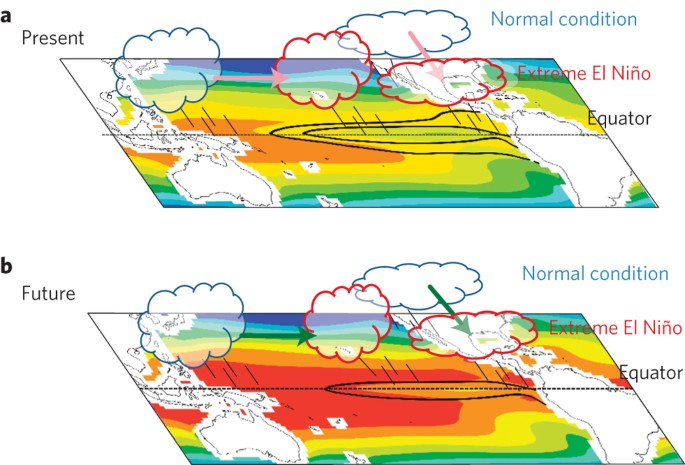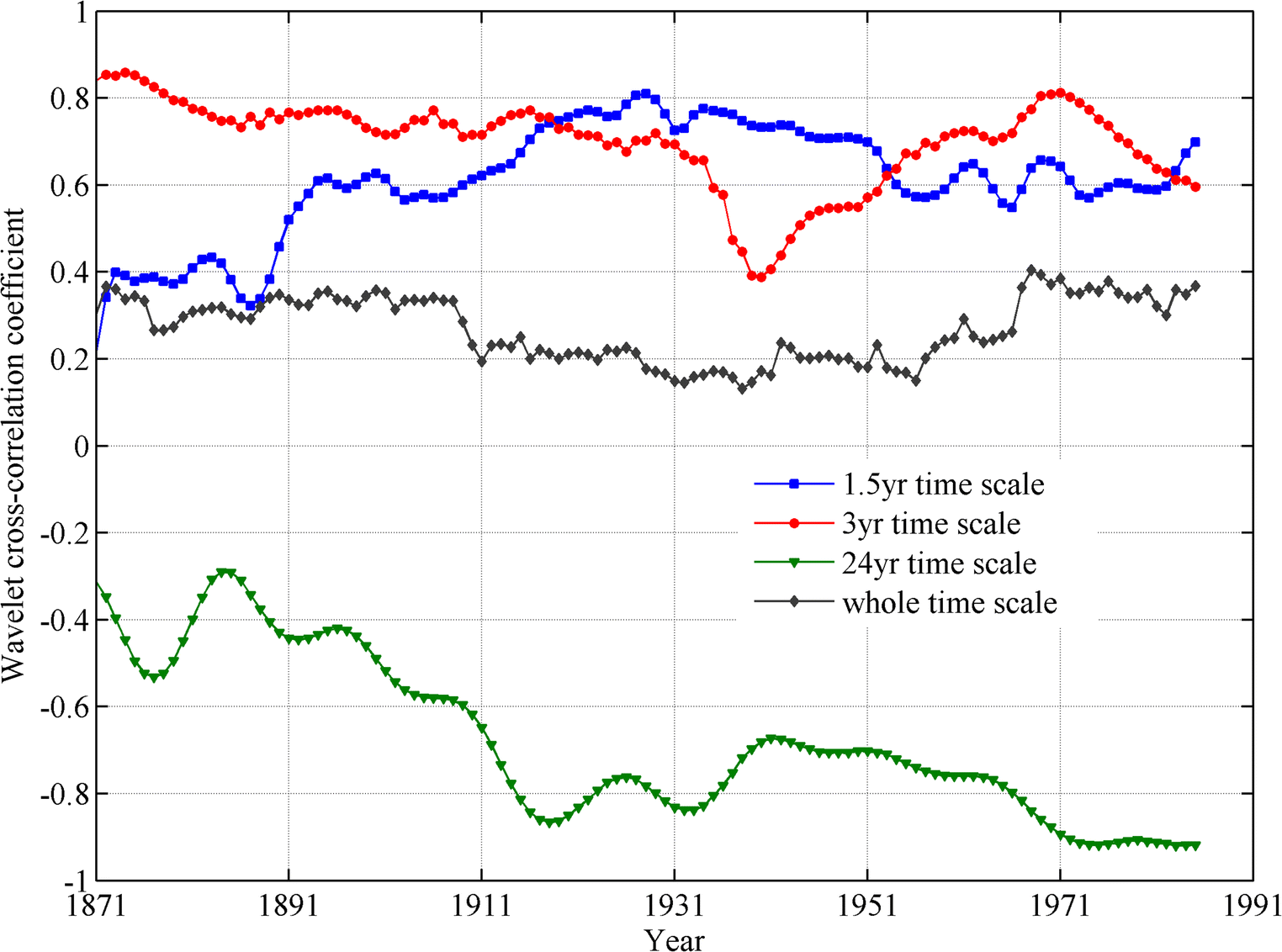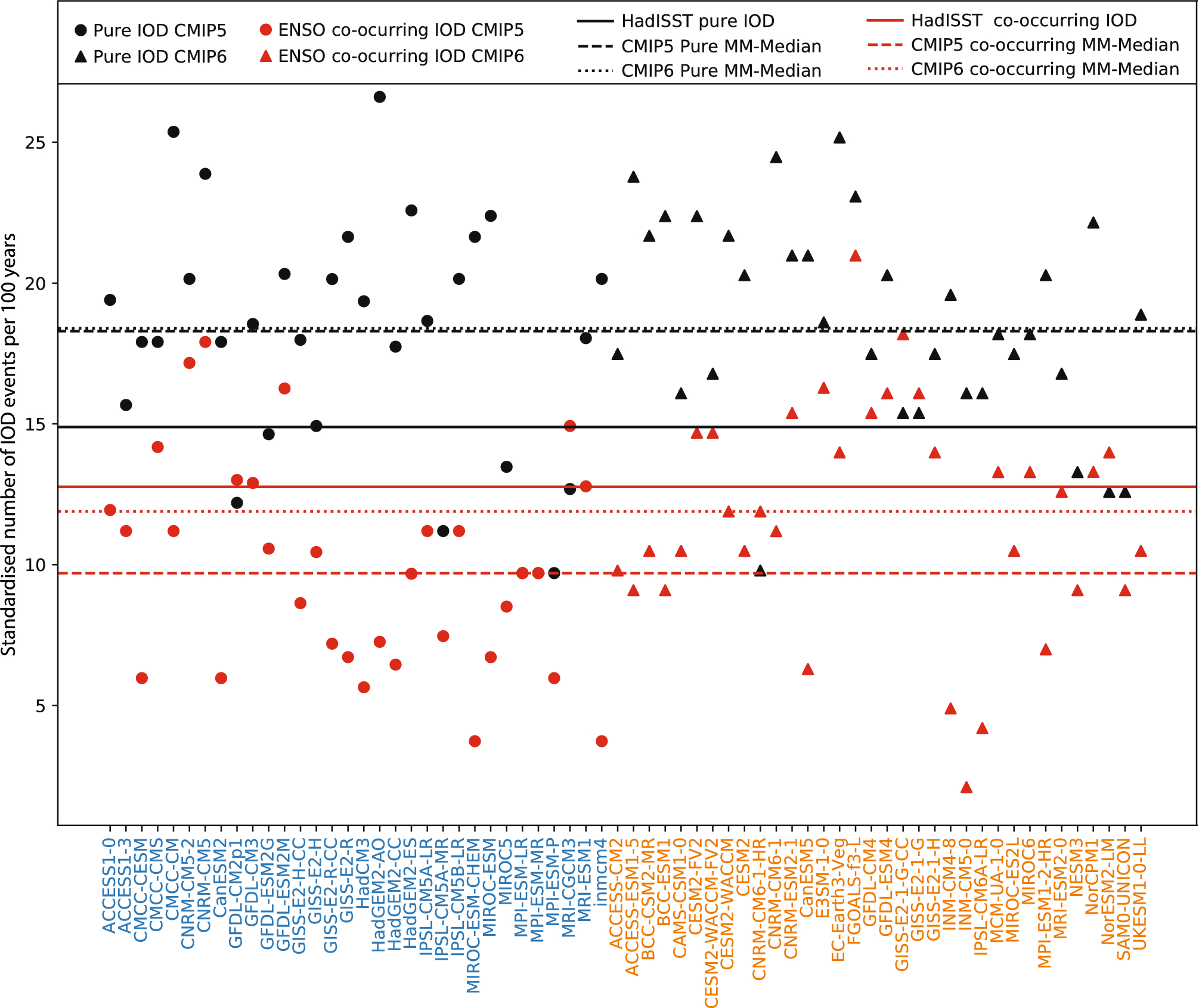Predicting ENSO & IOD Impacts on East Africa – how well can we actually do it?
A slow realisation I had while researching the last blog post, was that the key factor in the failure to accurately predict the impact of the 2015/2016 El Niño on East African rainfall is the lack of accurate predictive ability we available for the ENSO and IOD systems.

Mechanism for increasingly extreme El Nino events under global warming
These cycles are extremely strong drivers of interannual hydrological variability, and climate change is predicted to increase the frequency of extreme events in them both. East African precipitation is highly sensitive to the coupling of ENSO and the IOD; predictions are important to the rainfall-based agriculture centric economy.
The 2015/16 El Niño was not the first inaccurately predicted climatic event surrounding this phenomenon, it directly followed what was to be the highly anticipated and frequently modelled 2014/15 El Niño, which never occurred. This resulted from strong summer easterlies preventing the eastward shift of warm surface water, preventing the El Niño from beginning.

Evolution of the relationship between ENSO and IOD
While it was a strong event, the 2015/16 El Niño had unexpectedly little impact on the East African rains, and this is due to widespread failures in modelling the relationship between the El Niño–Southern Oscillation and Indian Ocean Dipole. The IOD refers to the interannual reversal of sea surface temperature gradient across the Indian Ocean, significantly altering precipitation patterns for the billions of people that live along its rim. While it has been shown that ENSO can trigger an IOD event, and this is most likely the false assumption underlying the 2015/16 prediction failures, it does also often occur independently.
There have been significant struggles with accuracy of ENSO predictions, and most models struggle to establish the drivers of its common occurrence with IOD events. The predictions disagree strongly between models, and there is little understanding of if the reasoning for the variation results from a lack of scientific understanding of the drivers of these two processes, of an error inherent to some models, or if there is little ENSO/IOD change from warming, and the models are oversensitive. This problem worsens significantly for long term climate models. CMIP6 models are worse at matching IOD amplitude observations than CMIP5, although show improvements in frequency and periodicity. They are also worse at calculating the skew of the IOD towards being positive, as well as the impacts of ENSO seasonality on this effect.

Number of IOD events per century in CMIP5 and CMIP6 models
Mirroring short term predictions, the strength of correlation between ENSO and the IOD has also increased in CMIP6, suggesting that prediction ability is not improving at the rate that East Africa needs. 80% of Lake Victoria’s water comes from precipitation, and it supports a watershed population of 45 million, so prediction ability is key to resilience, mitigation, and adaptation.
Very interesting perspective on IOD/ENSO impacts on rainfall! I liked your figure on the relationships between IOD and ENSO as it was easy to understand and accurate. I wonder if ENSO has a larger impact on East Africa, or if it has a larger impact on IOD which then influences precipitation in this zone. I also read that ENSO may have a direct relationship on rainfall in East Africa, despite this climate pattern not located directly next to this region (teleconnection).
ReplyDelete